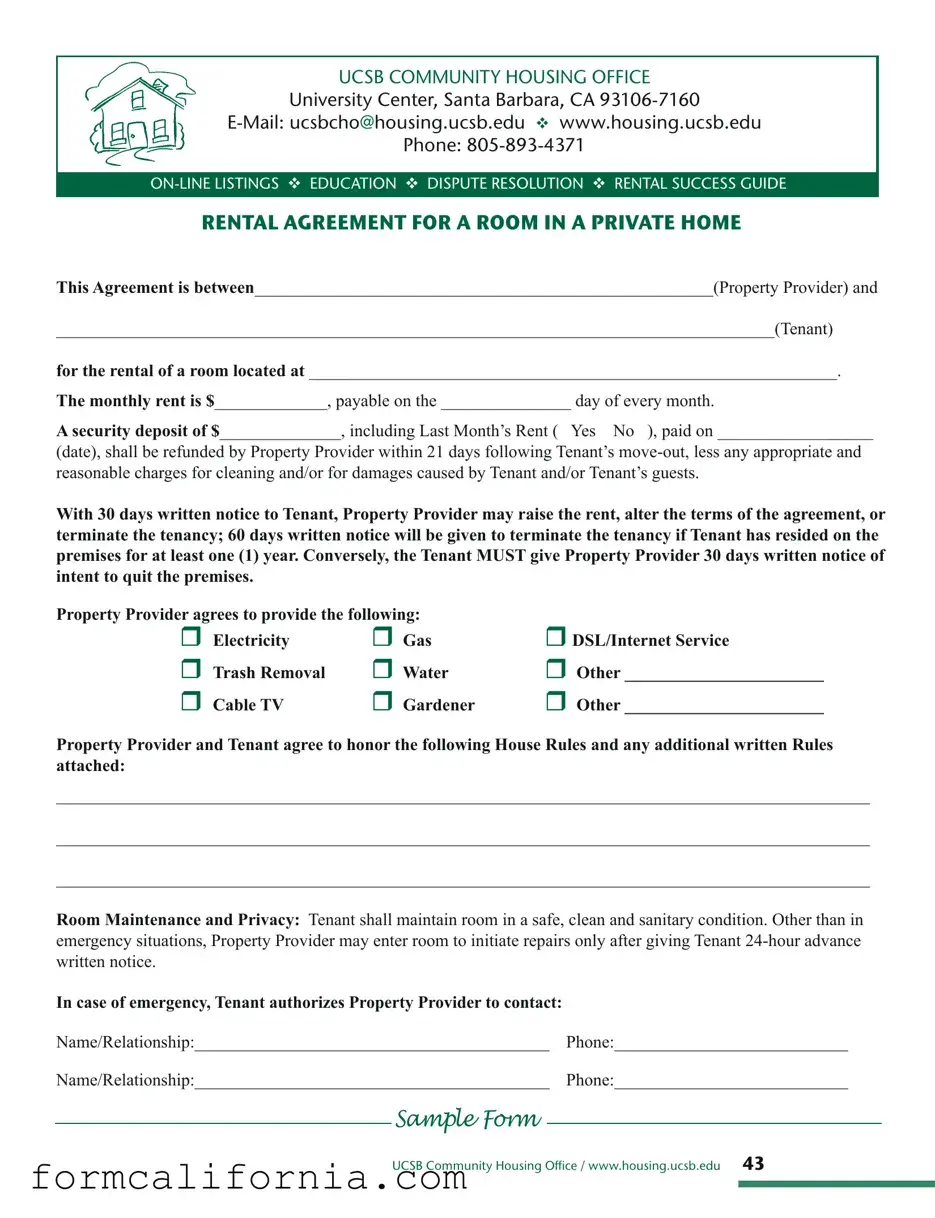UCSB COMMUNITY HOUSING OFFICE
University Center, Santa Barbara, CA 93106-7160
E-Mail: ucsbcho@housing.ucsb.edu v www.housing.ucsb.edu
Phone: 805-893-4371
ON-LINE LISTINGS v EDUCATION v DISPUTE RESOLUTION v RENTAL SUCCESS GUIDE
RENTAL AGREEMENT FOR A ROOM IN A PRIVATE HOME
This Agreement is between_____________________________________________________(Property Provider) and
___________________________________________________________________________________(Tenant)
for the rental of a room located at _____________________________________________________________.
The monthly rent is $_____________, payable on the _______________ day of every month.
A security deposit of $______________, including Last Month’s Rent ( Yes No ), paid on __________________
(date), shall be refunded by Property Provider within 21 days following Tenant’s move-out, less any appropriate and reasonable charges for cleaning and/or for damages caused by Tenant and/or Tenant’s guests.
With 30 days written notice to Tenant, Property Provider may raise the rent, alter the terms of the agreement, or terminate the tenancy; 60 days written notice will be given to terminate the tenancy if Tenant has resided on the premises for at least one (1) year. Conversely, the Tenant MUST give Property Provider 30 days written notice of intent to quit the premises.
Property Provider agrees to provide the following:
r Electricity |
r Gas |
rDSL/Internet Service |
r Trash Removal |
r Water |
r Other _______________________ |
r Cable TV |
r Gardener |
r Other _______________________ |
Property Provider and Tenant agree to honor the following House Rules and any additional written Rules attached:
______________________________________________________________________________________________
______________________________________________________________________________________________
______________________________________________________________________________________________
Room Maintenance and Privacy: Tenant shall maintain room in a safe, clean and sanitary condition. Other than in emergency situations, Property Provider may enter room to initiate repairs only after giving Tenant 24-hour advance written notice.
In case of emergency, Tenant authorizes Property Provider to contact:
Name/Relationship:_________________________________________ Phone:___________________________
Name/Relationship:_________________________________________ Phone:___________________________
Sample Form


